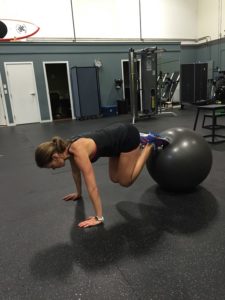 We have all been told we need it and that it will prevent us from hurting our backs, pelvises and necks. Did we ever have it? Which exercises are best? Do I need to be able brace properly? Should I be breathing like I do in Yoga?
We have all been told we need it and that it will prevent us from hurting our backs, pelvises and necks. Did we ever have it? Which exercises are best? Do I need to be able brace properly? Should I be breathing like I do in Yoga?
These are all valid questions and unfortunately the number of so-called experts giving differing advice (sometimes inappropriate) has created a lot of confusion for the layperson. I’ll cover these various topics over a series of posts here over the coming weeks.
What is it? Core strength is basically the body’s ability to stabilise the trunk and spine with muscles while moving in any direction. A loss in core strength is when excessive movement/instability is seen within a movement. This can be driven by a gradual process, or can be quite sudden, particularly in the presence of an injury1.
Did we ever have it? Yes! Core strength is not something foreign that has to be trained to each and every one of us. We all have or had some level of it but usually some of us have got into bad habits (like sustained postures at work) or have had injuries that have gradually weakened it.
Which muscles are our stability muscles? There are two types of core stabilisers:
Local joint stabilisers
Examples of local stabilisers are transversus abdominis, deep multifidus, the diaphragm and pelvic floor muscles. Some are proven to be anticipatory1,2, activating early to stabilise the spine when it’s required to move. In the presence of pain or injury, these muscles weaken and delay their timing. This means sudden movements of the spine (like being bumped) are no longer stabilised and segments in the spine may be affected leading to another episode of pain.
Global stabilisers
These are muscles that respond rather than anticipate. These include the gluteals, obliques and the lateral quadratus lumborum. They control direction-specific stresses. Movement dysfunction occurs with these types of muscles too.
When someone has movement-related pain or direction-specific issues, then retraining of these muscle groups is required to alleviate these. Usually there’s a pattern to people’s pain, like bending forward that causes their problem while upright activity is fine, so the Physiotherapist’s job is to assess how you are moving and what compensations you might be making so that they can properly devise a core stability programme that retrains the right muscles in the right way. There’s no point avoiding that movement forever!
1. Hodges PW, Richardson CA. Delayed postural contraction of transversus abdominis in low back pain associated with movement of the lower limb. J Spinal Disord, February 1998;11(1):46-56.
2. Hides JA, Richardson CA, Jull GA. Multifidus muscle recovery is not automatic after resolution of acute, first-episode low back pain. Spine, Dec. 1, 1996;21(23):2763-9.





